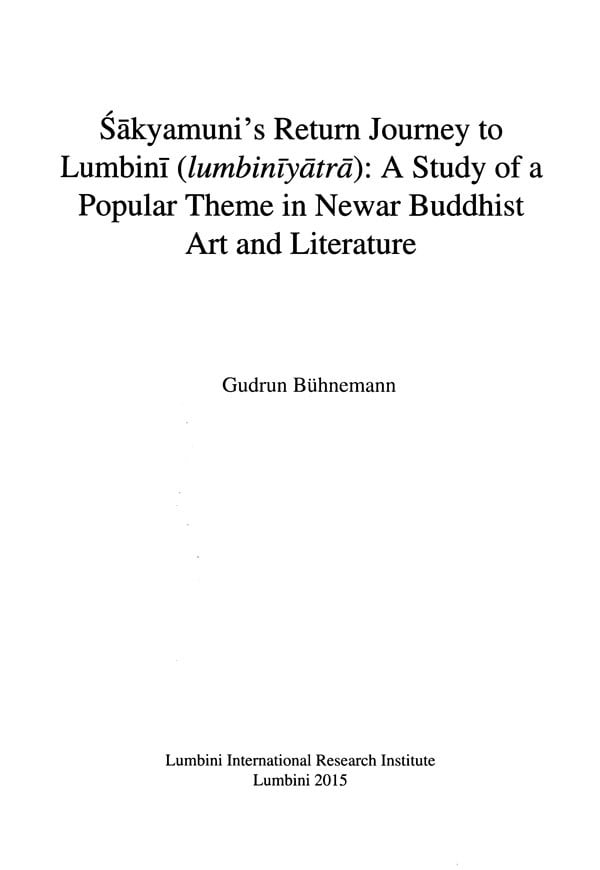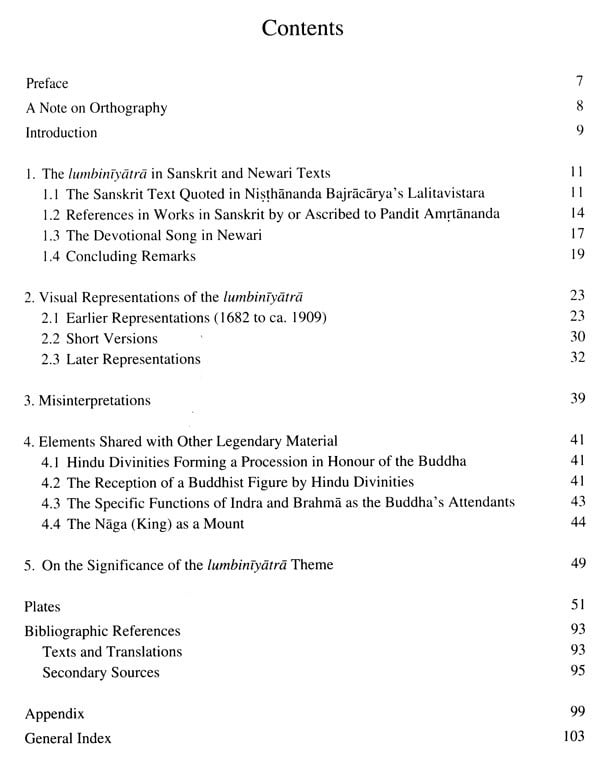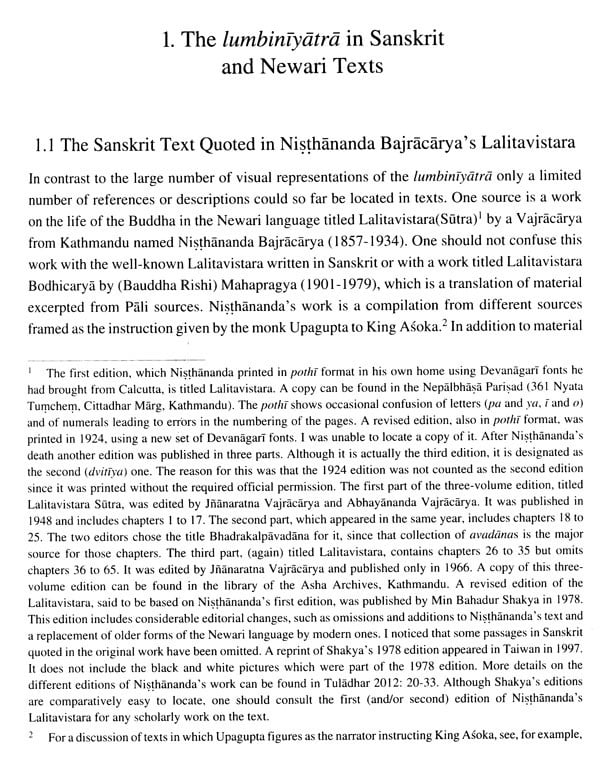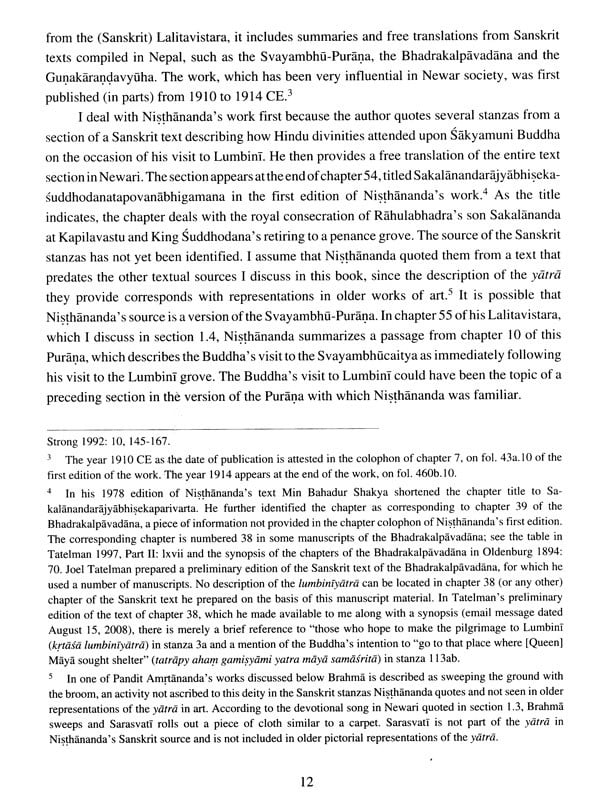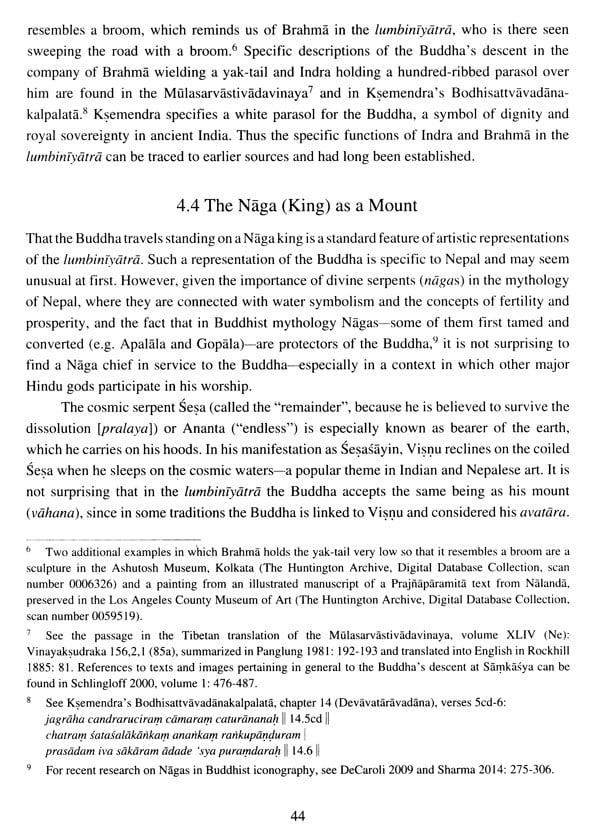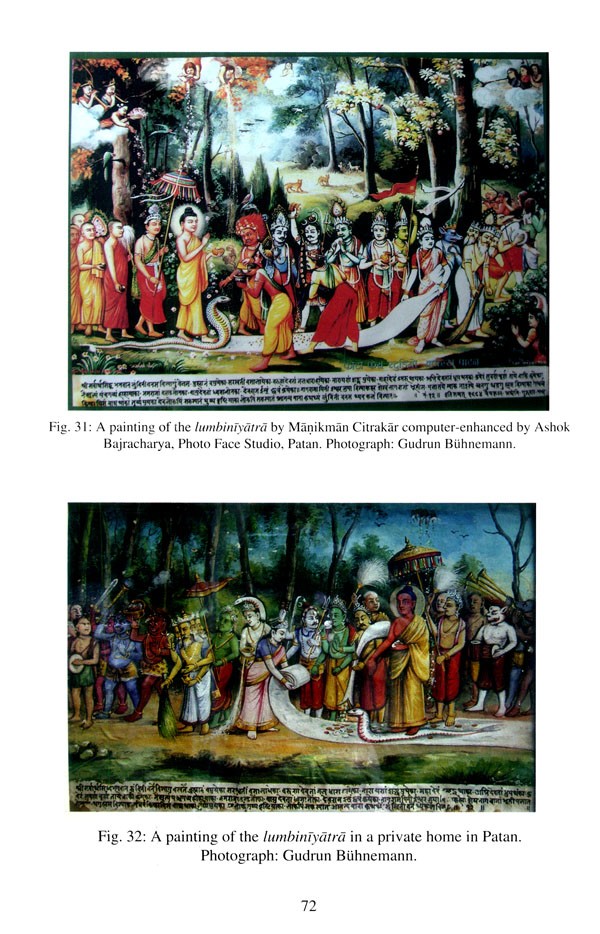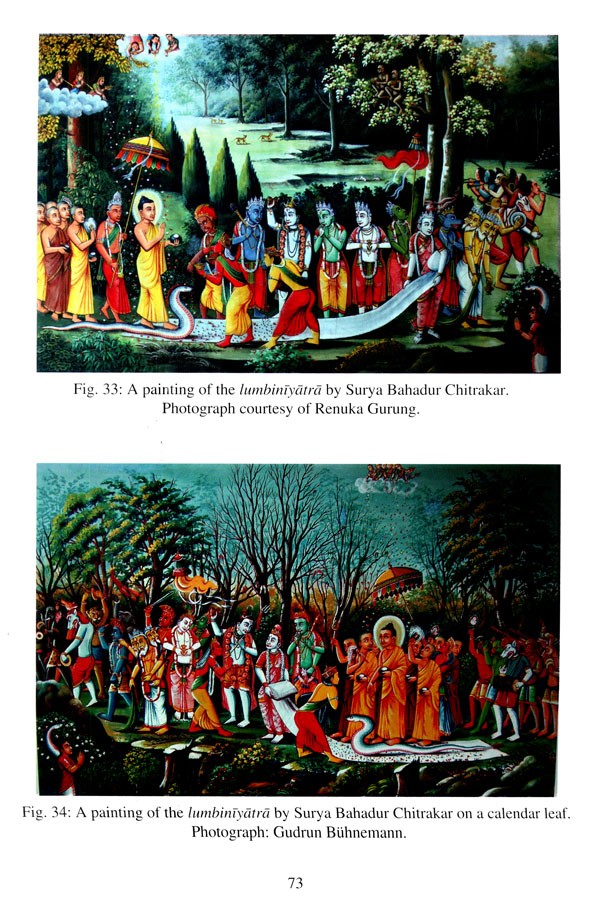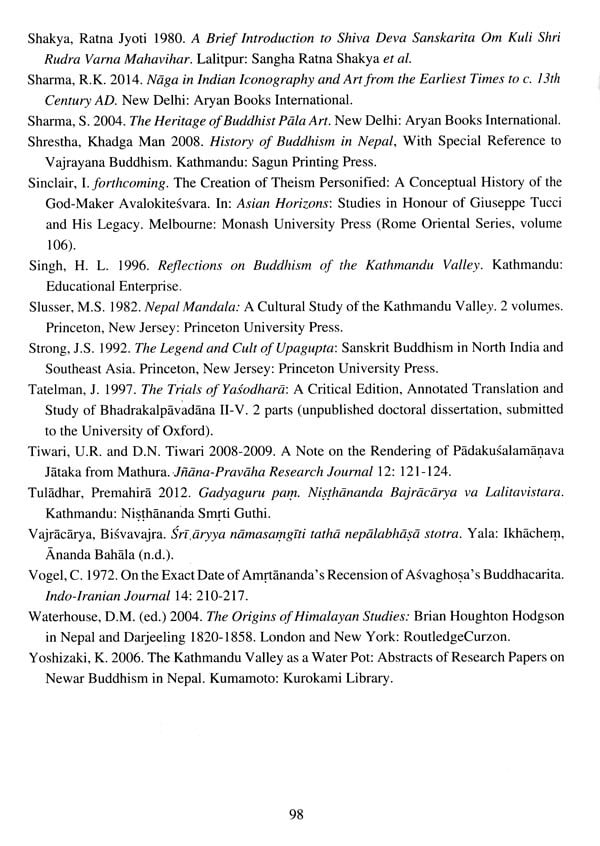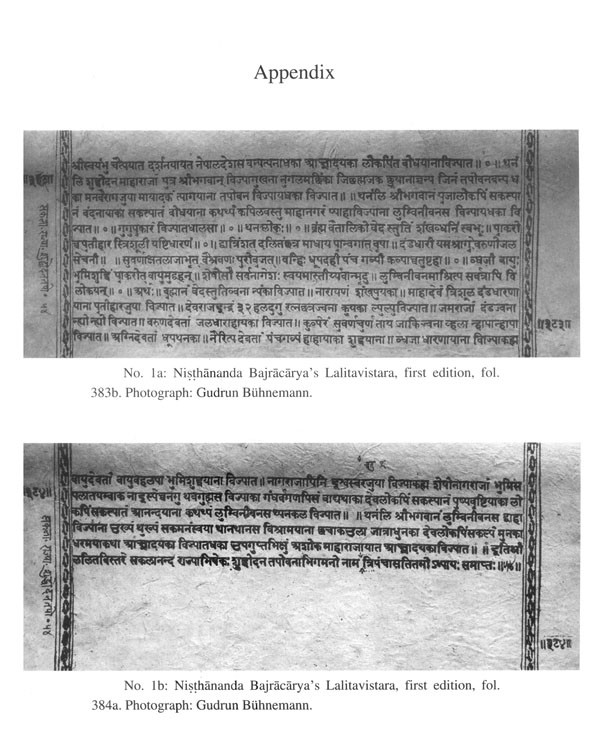About the Book According to Newar Buddhists, Sakyamuni Buddha returned to his birthplace, Lumbini, after his enlightenment. Visual representations of his journey and visit to Lumbini date back to at least the seventeenth century and became especially popular in nineteenth- and twentieth-century Nepal. They show the Buddha riding standing up on a Naga (commonly identified with Seşa) while being attended by Hindu deities in service to him. Indra holds an honorific parasol steady over the Buddha from behind and a number of Hindu divinities are lined up in a procession and perform specific services. The theme, known as the lumbiniyātra, is found on its own or as one of the events in the life of Sakyamuni Buddha, or else as a subsidiary scene in larger paintings with a focus on a different Buddhist figure. Both long and short versions are extant. This book traces the history of the theme by examining literary sources in Sanskrit and Newari and pictorial representations in different media, including painting, metalwork, terracotta and woodcarving. It then discusses elements of the yatra which are also found independently in other contexts and finally offers some thoughts on the significance of the theme.
About the Author Gudrun Bühnemann is Professor of Sanskrit and Indic Religions at the University of Wisconsin-Madison, USA. She has published extensively on South Asian iconography and ritual. Her recent books include Buddhist Iconography and Ritual in Paintings and Line Drawings from Nepal (Lumbini International Research Institute, 2008) and The Life of the Buddha: Buddhist and Saiva Iconography and Visual Narratives in Artists' Sketchbooks from Nepal (Lumbini International Research Institute, 2012).
Preface This book has grown out of an interest in a theme I encountered frequently in works of art when visiting the Kathmandu Valley, Sakyamuni Buddha's fumbinfyrra has been represented by many artists and in different media in Nepal over the centuries but the theme has often been misinterpreted. No research was available on the topic until I published the article "The Buddha's (Return) Journey to Lumbini (lumbiniyatra)" in the Wiener Zeitschrift für die Kunde Südasiens in 2012. In the present book I build on the initial research discussed in this article, which I have substantially enlarged and revised. The book offers an analysis of newly identified additional material, some of which is considerably older than what was included in the article. Moreover, the book contains extracts from original texts and translations and reproduces a large number of images.
I would like to thank friends and colleagues who have contributed helpful suggestions and comments and/or supplied visual material, most of all Gerd Mevissen, Iain Sinclair. Kashinath Tamot, Alexander von Rospatt and Manik Bajracharya. I am also grateful to lan Alsop, Helen Appell, Ashok Bajracharya, Hartmut Buescher, Christoph Cüppers, Hubert Decleer, Renuka Gurung, Susan L. and John C. Huntington, Anne Macdonald, Mudagamuwe Maithrimurthi, Gudrun Melzer, Axel Michaels, Katherine Paul, Philip Pierce, Karin Preisendanz, Ellen Raven, Ratna Jyoti Shakya, Narendra K. Sinha, Wolfgang Stein, Roland Steiner, Russell Steinert, Joel Tatelman, Gautam V. Vajracharya, Chlodwig Werba, Michael Willis and Monika Zin, all of whom have supported my work in various ways.
Introduction On awalk through Patan the day of Buddha's birthday (Buddha Jayantly May spot framed of a painting, garlanded and prominently displayed from the of home (figs. and 2a). illustrates theme in Newar which has held my for some time. Sakyamuni Buddha riding standing up Naga while being by Hindu deities in service to Indra holds honorific parasol steady over the behind the latter, carrying begging left hand and displaying the wish-granting gesture with right, advances accompanied the familiar group five number deities procession and specific services. right to left: Kubera coins from Narayana/Viyou blows conch Mahadeva/Mahesvara/Šiva, hand, sounds his rattle Sarasvati rolls a piece of cloth which functions similarly to carpet: Varuna pours Brahmă the ground with broom: Vayu holds his banner: Agni incense burner, blue-complexioned wields his and green-complexioned brandishes and shield. Musicians walk front and at the close of the procession. seated each offering jackfruit, are in the background. The printed below the in Newari language reads: "Lord Buddha has to the Lumbini grove" buddha lumbinibanasa This painting, renowned artist Anandamuni Sakya(bhiksu) from Itum Bahah, Kathmandu, illustrates strand of the Buddha popular among Newar Buddhists. known the lumbinlyärra, which understood Šakyamuni Buddha's return journey and to his birthplace after enlightenment. literature and the theme realized two ways: the Buddha's journey his while he being attended by Hindu deities service him; as the Buddha's Hindu deities upon arrival Lumbini. The of solicitous Hindu always includes the well-known triad Brahma, Siva Visnu. Ten divinities core artistic representations number of participants paying homage can much larger and include various kinds semi-divine other places only 20th century (Singh 1996 7-8 LeVine/Gellner 2005, 28, 120-121) this book mostly use Nairtya (instead of Nairta), a form the name common among Newars.
**Contents and Sample Pages**
